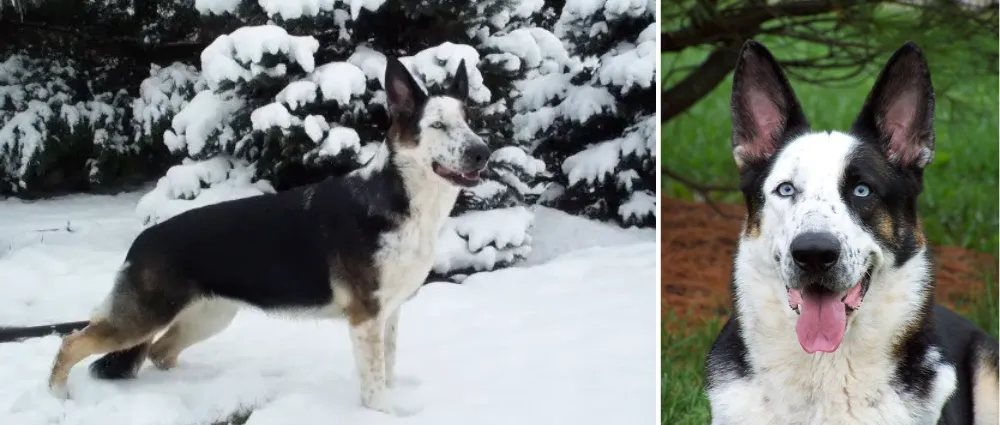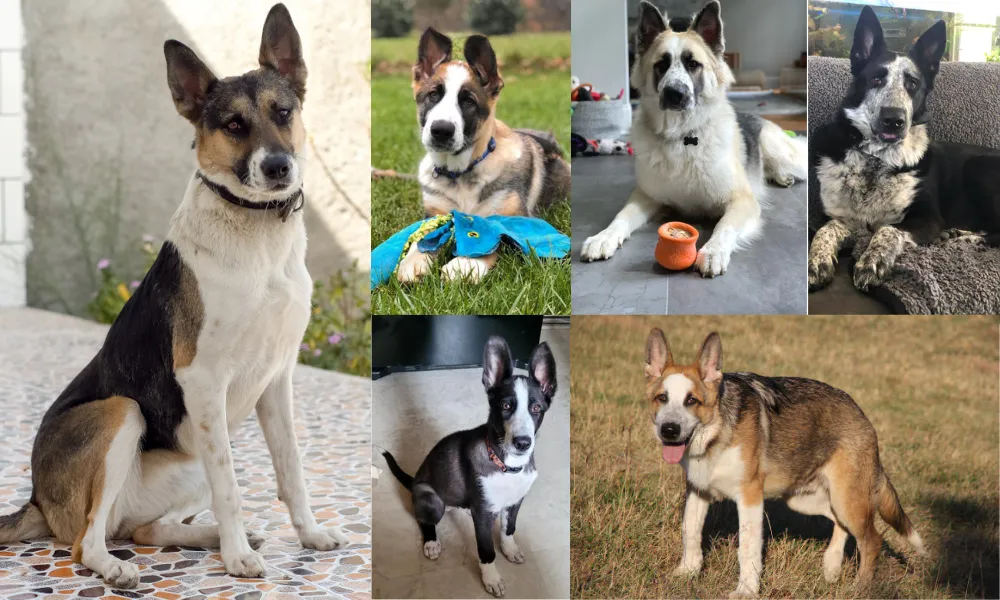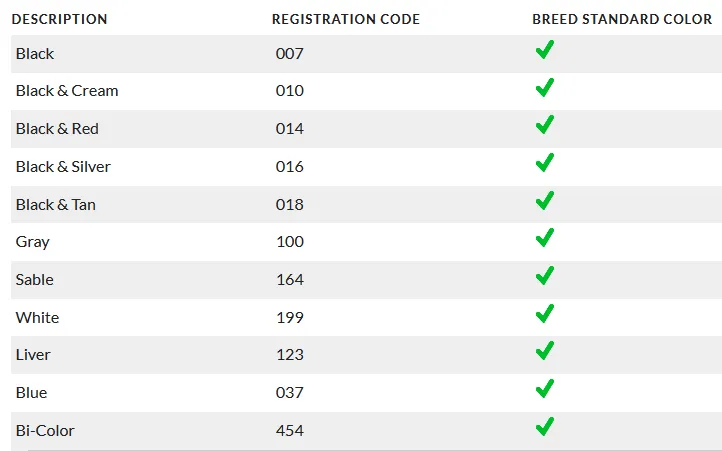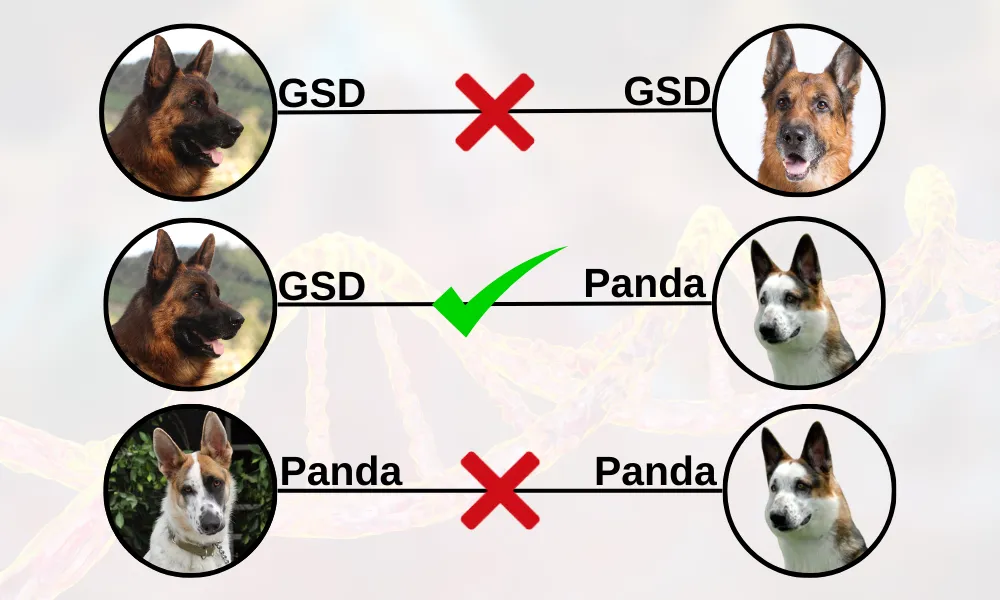Do you want to know whether Panda German Shepherds are purebred or not, Why they have “panda marking” or “panda spotting”, and How to create a Panda German Shepherd? You’re in the right place.
Panda German Shepherd is a beautiful rare variation of German Shepherd breed. Unlike the traditional black and tan or sable German Shepherds, Panda German Shepherds have a piebald (having irregular patches of two colors) pattern, which includes patches of white along with the usual black and tan.
The unique coloration of Panda German Shepherds makes them highly sought after by some, but others in the purebred community hold serious reservations due to the deviation from traditional appearances.
Following topics will be covered in this post:
- Are Panda German Shepherds Crossbreed?
- Are Panda German Shepherds Purebred?
- How a Panda German Shepherd is Created?
RELATED
- Are White German Shepherds Purebred?
- How to Identify the Purity of German Shepherd Puppy | 5 Ways
- 5 Different Types Of German Shepherd Breeds & Their Features
- How to Know German Shepherd Puppy is Male or Female | Gender
- Top Professional Panda German Shepherd Breeders
- Are German Shepherds Descendants of Wolves?
- What Factors Determine If Two Dog Breeds Are Compatible For Breeding?
|| DON’T MISS! Today’s Deals on Chewy – Pet Foods, Products, Supplies, Toys and more…
01. Are Panda German Shepherds Crossbreed?
Many German Shepherd enthusiasts assume that the Panda color in German Shepherd is the result of crossbreeding to Collies or some inferior stock, but the DNA tests conducted by AKC(American Kennel Club) reject these assumptions.
The DNA tests confirmed that the parents who produced the first Panda German Shepherd “Lewcinka’s Franka von Phenom”, a black/tan/white colored female puppy, born in 04 October 2000, were a purebred female black German Shepherd and a purebred male black and tan German Shepherd.

Are Panda German Shepherds Purebred?
Are Panda German Shepherds purebred? Answer is, No. Panda German Shepherds are not purebred because the “panda marking” or “panda spotting” in German Shepherds is the result of dominant mutation of the KIT gene, as explained below. Dog organizations/registries such as AKC, are very meticulous about the genetic health and disorders.
A Dominant Mutation is a change in genetic material that has a strong influence on an organism’s traits. When this type of mutation occurs, it can override the effects of other genes in determining certain characteristics. Dominant mutations are often easily seen in an individual’s physical appearance or behavior.
Related: German Shepherd Coat Color Patterns and Variations
The KIT Gene is an important part of bodies that helps to control the growth and development of certain cells. It plays a crucial role in regulating the production of a type of protein called KIT receptor, which is involved in many different processes including growth and division, survival, and cell migration. When there are changes or mutations in the KIT gene, it may lead to health problems and conditions such as piebaldism (a rare inherited disorder of pigmentation characterized by patchy white skin and white hair present at birth. This condition is caused by a lack of melanocytes, the cells responsible for producing pigmentation). Piebaldism does not usually cause health problems in dogs.

Because of this genetic disorder Panda German Shepherds cannot be registered with the top dog registries such as AKC(American Kennel Club), CKC(Canadian Kennel Club), SV(Verein für Deutsche Schäferhunde), and UKC(United Kennel Club) as purebred German Shepherd dogs.
German Shepherd standard colors which are acceptable for AKC(American Kennel Club).

Panda German Shepherds are found in both Showline German Shepherds and Working Line German Shepherds, and can have long and short hairs.
Most of the breeders and trainers who have worked with Panda German Shepherds have stance that these dogs maintain the same intelligence, loyalty, and versatility that are hallmarks of the German Shepherd breed. They can excel in various roles, from family pets to working dogs in police and military capacities. They possess the same aptitude for training and are equally capable in tasks such as search and rescue, service work, and agility competitions.
Like all German Shepherds, they require regular exercise, mental stimulation, and socialization to thrive.

03. How a Panda German Shepherd is Created?
Like White German Shepherds, the enchanting Panda German Shepherds also captivate many dog lovers with their adorable appearance. If you’re someone who is interested to create Panda German Shepherd puppies or just curious, Case 2 below is the only way to create a Panda German Shepherd.
- Case 1: Breeding of two regular German Shepherds does not create a Panda German Shepherd. They cannot transmit the Panda variant to any of their offspring.
- Case 2: Breeding of a regular German Shepherd with a Panda German Shepherd are expected to create the Panda German Shepherds. They will transmit the Panda variant to 50% of their offspring.
- Case 3: Breeding of two Panda German Shepherds does not create a Panda German Shepherd because the mode of inheritance in Panda German Shepherds is “Autosomal Dominant”. It is a type of genetic inheritance where a child only needs to inherit one copy of a gene to show a certain trait, disorder, or a disease. Panda is a dominant gene. In its homozygous(child inherits two identical copies of same gene) state, the mutation is considered embryonic lethal(a condition that causes a developing embryo to not survive), the puppies do not survive birth.

Final Thoughts
Despite their increasing popularity, the AKC and other top dog registries do not recognize Panda German Shepherds as purebred. The primary reason for this decision lies in the genetic mutation responsible for the panda coloration, which deviates from the breed standard established by them.
These dog registries/organization are very careful about maintaining the breed’s historical lineage and genetic health. They emphasize the importance of adhering to long-standing standards to ensure the breed’s stability and quality. Additionally, the rarity of the panda coloration raises questions about genetic-diversity (the variation in genes and genotypes within a species) and the potential consequences of prioritizing aesthetic traits over functional ones.
Also Read
- A Guide for Raising German Shepherd Puppy at Home
- Is There a Mini German Shepherd Breed Exist?
- How Slant (Sloped) Back German Shepherds Were Created?




Leave a Reply